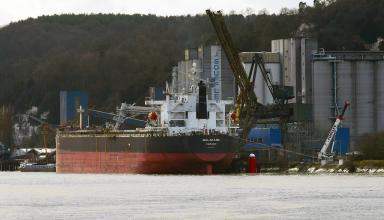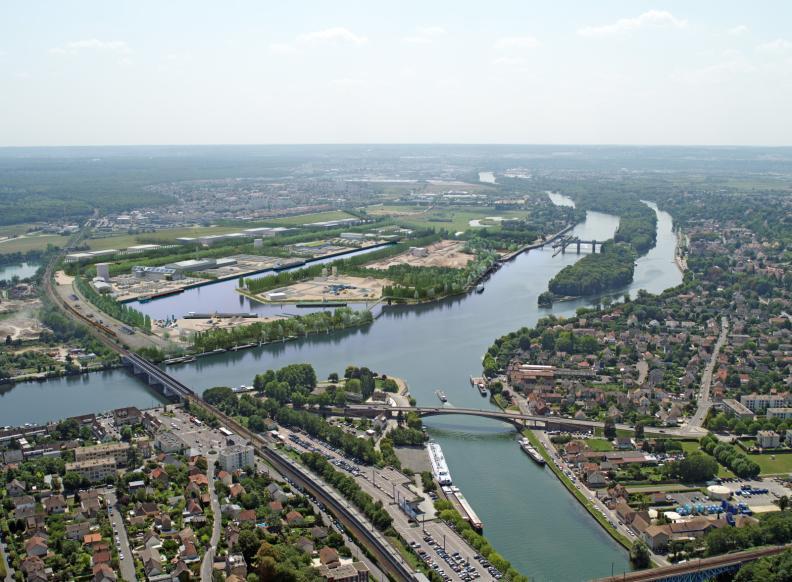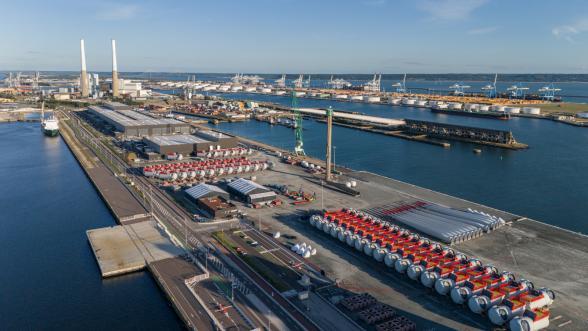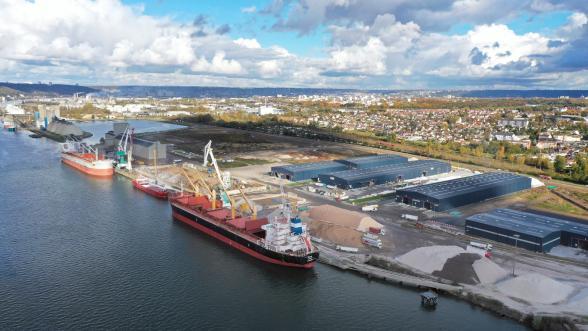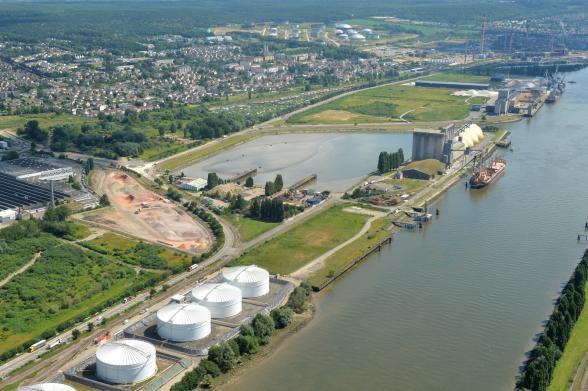- ABOUT US
- GOODS
- A multi-sector focus
- A maritime service offering in the first rank
- An attractive multimodal offering
- An expanded shortsea service offering
- Terminaux portuaires et quais à usage partagé
- High-quality ship services
- Fluid, facilitated goods throughput
- A port that puts its performance figures in the public domain
- PASSENGERS
- MULTIMODALITY
- ECOLOGICAL TRANSITION
- INNOVATION
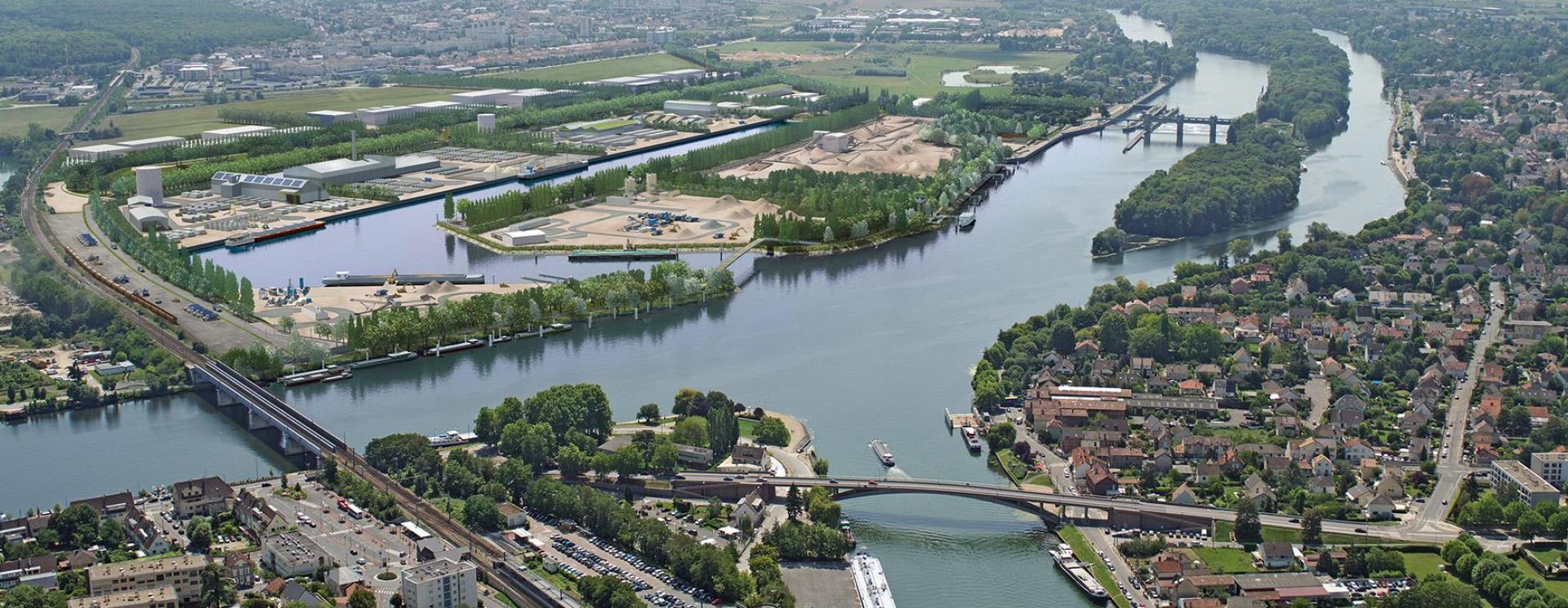
Formation of a sustainable industrial cluster on the Seine axis
Published on - Updated
Modernisation of Canteleu grain terminal
HAROPA PORT | Rouen has started a works programme to overhaul the berth support pilings of the Soufflet-Socomac grain terminal on the right bank at Canteleu. This is a collaborative effort with the Soufflet Group and has been planned as part of the maritime access improvement project. The intention is to adapt the upstream berth for the deeper navigation channel.
Cost: €17.8m.
Creation of PSMO (West Metropolitan Seine Port)
PSMO is a planned multimodal (waterway, rail, road) platform located to the west of the Paris conurbation and intended for use by the construction industry (for both unprocessed and prefabricated building materials). Its purpose is to expand the service offering and encourage modal transfer.
100
hectares for the area
€122m
for the cost
2040
for the delivery time
Hosting offshore wind
The port of Le Havre has made available land, port facilities and shipping access to Siemens Gamesa Renewable Energy (SGRE) to enable the setting up of a wind power sector in Le Havre. The plant for the fabrication of turbine blades and nacelles will be used initially for offshore windfarms located in the North Sea/Channel area.
The work undertaken by the port includes:
- Site preparation,
- Creation of two berths with a total dock length of 400m :
- One 200m quay of so-called “jack-up” type for berthing ships for the loading of heavy lift components stored at quayside,
- One 200m quay of so-called “lo-lo” type for importing and exporting various components.
36
hectares in area
€146.7m
for the cost
2023
for the delivery time
Petit-Couronne Eco-ZIP
The purpose of a creating an “eco-zip” (zip = port industrial zone) is to foster the circular economy, the use of green forms of energy and all and any innovations likely to reduce the impact of port activities. The project notably involves using the space offered by the dock basin, modernising Petit- Couronne Quay (QPC) and converting the gas flare tower area (formerly Petroplus).
The project will offer new logistics solutions with direct river access to industrial operators present locally.
Modernisation of Grand Aulnay wharf
In line with the programme to improve Rouen’s maritime access, modernisation of Grand Aulnay wharf will allow the operator, Rubis Terminal, to handle vessels up to 230m in length thanks to a new mooring and berthing system.
Addressing the challenges posed by the Grand Paris project
As an actor in the energy transition and green growth, HAROPA PORT acts to boost the dynamism and competitivity of the Grand Paris project area.
The signing of a partnership between HAROPA PORT | Paris and Société du Grand Paris further strengthens the use of waterways to remove the excavated material produced by the Grand-Paris-Express project. In addition, HAROPA PORT and construction industry operators are continuing to invest to address the logistics challenges posed by the Grand Paris project:
- The planned PSMO multimodal platform,
- The planned expansion of the port of Limay-Porcheville,
- Preparatory work for the setting up by Société du Grand Paris of a facility for sorting and transporting excavated material produced by the tunnelling machines used for line 15 of the Grand Paris Express at Bonneuil-sur-Marne port,
- The signing of a Gennevilliers site occupancy agreement with Cemex Granulats for the creation of a platform for excavated material removal and trade..
Industrial companies based at the Seine waterside are also continuing to modernise their facilities on the river in order to ensure the long-term viability of their operations on land that they occupy in the urban environment.
